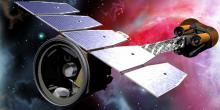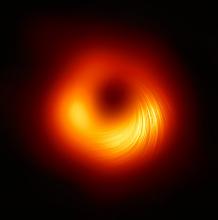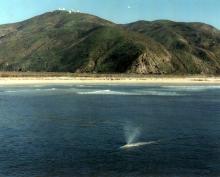Listen to today's episode of StarDate on the web the same day it airs in high-quality streaming audio without any extra ads or announcements. Choose a $8 one-month pass, or listen every day for a year for just $30.
You are here
Moon and Uranus
Two planets line up close to the Moon tonight. Brilliant Mars is to the upper right of the Moon as they climb into view in late evening. And Uranus is closer to the upper left of the Moon. It’s much fainter than Mars, though, so you need binoculars to pick it out.
Only one spacecraft has ever visited Uranus. Voyager 2 flew about 50,000 miles above its cloud tops in 1986. Yet scientists are still learning from those observations.
Earlier this year, for example, two researchers reported that Voyager had flown through a “bubble” of the planet’s atmosphere.
Voyager recorded the strength of Uranus’s magnetic field. Scientists had looked at those observations. But the observations were averaged out over a period of minutes. For the new study, the researchers looked in greater detail — variations over as little as two seconds. And they found a “zigzag” in the data — a quick spike followed by a dip, then back to normal. It lasted only a few seconds.
The researchers concluded that Voyager had passed through a “plasmoid” — a bubble of charged particles stripped away from Uranus’s atmosphere. It was about 125,000 miles long, and twice as wide. Such bubbles had been seen at other planets, but not Uranus. They’re pulled away at the tail of the planet’s magnetic field, by interactions with the solar wind.
The observations indicate that such bubbles could have carried away much of the planet’s early atmosphere — one blob at a time.





